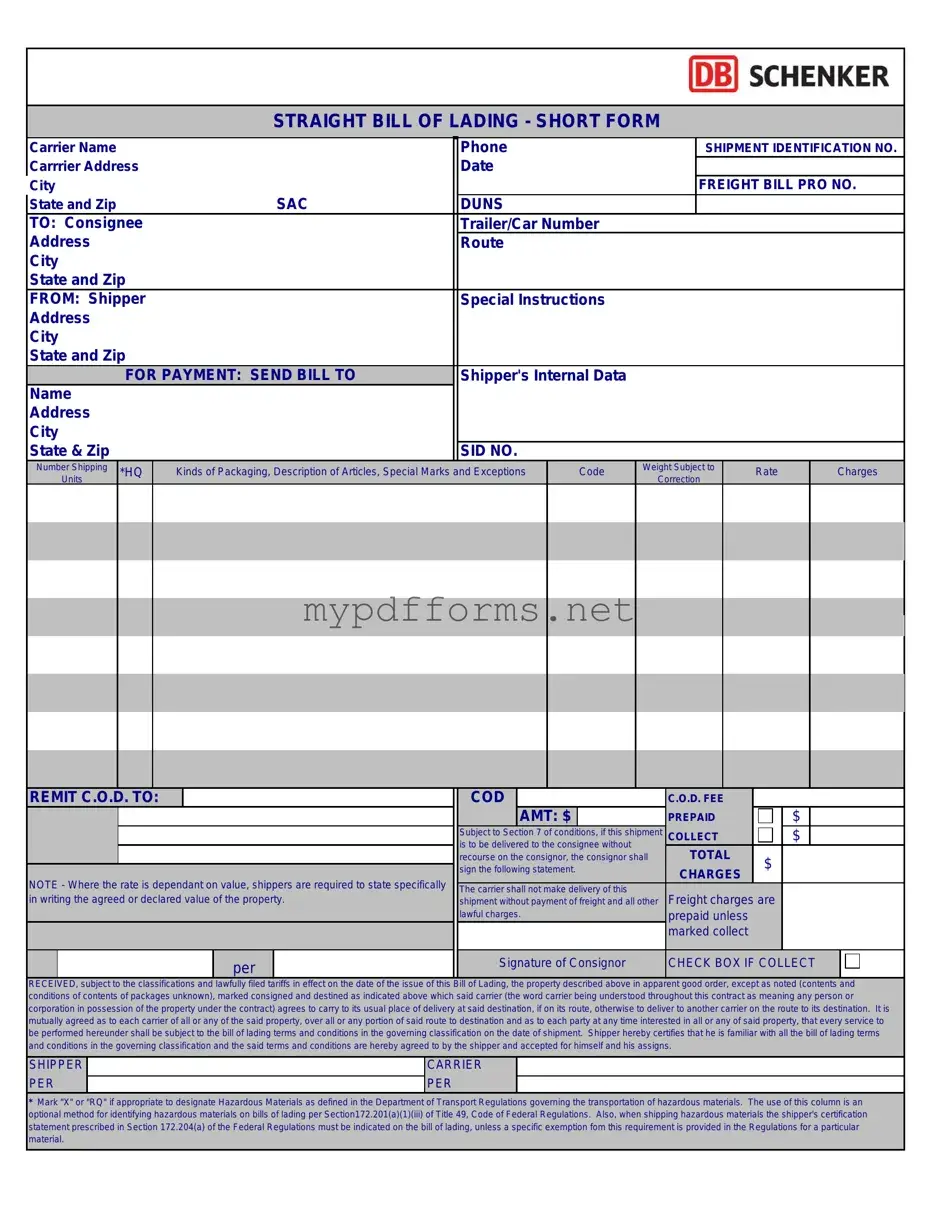The Straight Bill of Lading is similar to the Uniform Commercial Code (UCC) documents, particularly in its role in facilitating the sale of goods. Both serve as legal proof of the transaction and outline the terms of delivery. The UCC provides a framework for commercial transactions, while the Straight Bill of Lading specifically addresses the transportation of goods. They both protect the interests of the seller and buyer, ensuring clarity in the movement of products.
Another document comparable to the Straight Bill of Lading is the Order Bill of Lading. While the Straight Bill is non-negotiable and requires the consignee to be named, the Order Bill can be transferred to others. This flexibility allows the Order Bill to be endorsed and passed on, making it useful in transactions where goods may change hands multiple times before reaching the final recipient.
The Freight Bill also shares similarities with the Straight Bill of Lading. Both documents detail the shipment of goods and the associated costs. The Freight Bill specifically outlines the charges for transportation, while the Straight Bill serves as a receipt for the goods. Together, they provide a complete picture of the shipping process, ensuring that all parties are aware of their responsibilities.
A Commercial Invoice is another document that aligns closely with the Straight Bill of Lading. The Commercial Invoice provides a detailed account of the sale, including item descriptions, quantities, and prices. It serves as a request for payment, while the Straight Bill confirms that the goods have been shipped. Both documents are essential for international trade, as they facilitate customs clearance and payment processing.
The Delivery Receipt is also akin to the Straight Bill of Lading. This document serves as proof that the goods have been delivered to the consignee. While the Straight Bill outlines the terms of transport, the Delivery Receipt verifies that the goods were received in good condition. Both documents are crucial for maintaining accurate records of transactions and shipments.
To ensure your healthcare preferences are honored, it's important to understand the process of creating a Medical Power of Attorney. This crucial document enables you to appoint someone you trust to make medical decisions on your behalf, even if you’re unable to communicate your wishes. For more information, you can access a comprehensive Maryland Medical Power of Attorney guide that details how to properly complete this vital form.
The Packing List is another document that complements the Straight Bill of Lading. It provides a detailed list of the items included in a shipment. While the Straight Bill serves as a contract for transportation, the Packing List helps verify that the correct items were loaded and shipped. Together, they ensure that all parties are informed about the contents of the shipment.
Lastly, the Export Declaration is similar to the Straight Bill of Lading in that it is required for international shipments. This document provides information about the goods being exported, including their value and destination. While the Straight Bill focuses on the transportation aspect, the Export Declaration is essential for compliance with customs regulations. Both documents work together to facilitate smooth international trade.
